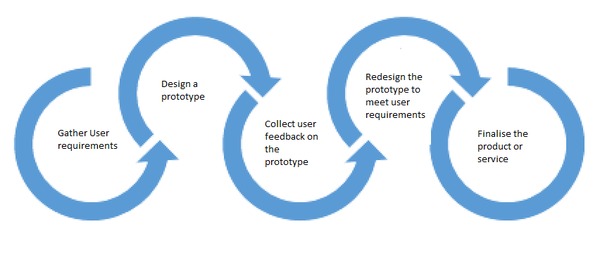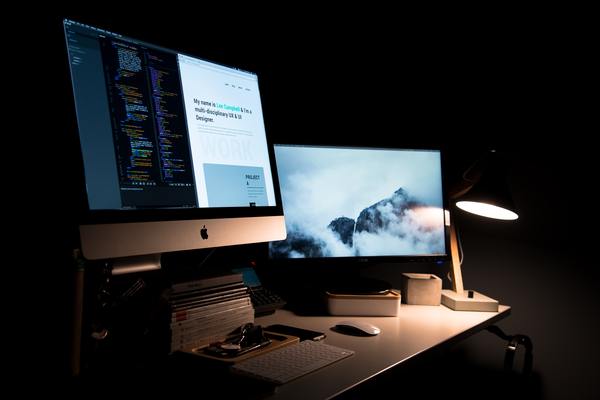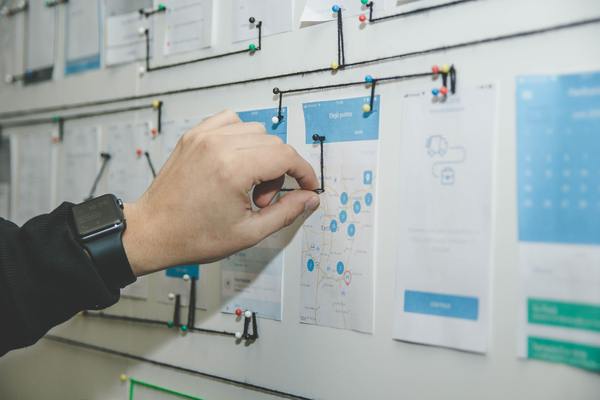The Principles behind User-Centred Design
User-centred design is built on a deep understanding of the user experience. As Vause pointed out, user-centred design is about trying to solve an end-user's problem rather than a business problem for the design firm. The UCD process puts the user first.
Mapping the UCD Process
The UCD process consists of five steps:

Gathering User Requirements
Vause recommended that designers sit down and place themselves in the users’ shoes before meeting with the users. "What are they trying to do? What devices are they using? Are they trying to get a job done?" he asked. These are all questions that guide the UCD process.
After designers have carried out this initial research, it’s time to meet with the end-users. "The important thing is talking to people," Vause remarked. "We document that through different methods – personas, user journey maps, user scenarios – so we can understand the challenges users face."
Designing a Prototype
"Designing a prototype starts off with a sketch," Vause commented. Next, he and his team will create low-fidelity wireframes (a clickable prototype), so that the people testing it have a sense of how it works. Then, the UX design team shares the prototype with the client so the client can provide feedback.
Vause noted that the UCD process doesn’t use highly-rendered prototype designs. Because the design goes through more than one iteration, it doesn’t make sense to invest the time and effort to design a more complete prototype when you haven’t gotten customer feedback on it yet.
Collecting User Feedback on the Prototype
The next step is collecting user feedback on the prototype. This step is crucial; it’s what the UCD process is all about.
Vause acknowledged that it can be challenging to collect frequent user feedback. Users often don’t understand what type of feedback they need to submit. Instructing users on providing comments on specific features or issues helps the process go faster. The comments they offer inform the next iterations.
Redesigning the Prototype for User Requirements
The UCD process involves more than one iteration; that’s a fact of life. Vause pointed out that directing the feedback as much as possible yields better results.
That being said, it will still take a few design sprints. Be prepared to design something, submit it for user feedback, and for users to tell you it doesn’t quite meet their needs. The way to reduce the number of design sprints is to incorporate user comments into the next iteration; the sooner users are happier with your design, the fewer iterations you will have to go through.
The UCD Process in Action: Sustainable Coastlines
Vause cited the example of the Sustainable Coastlines project Enlighten worked on recently. Sustainable Coastlines is a charity devoted to safeguarding New Zealand's shores. Enlighten partnered with Sustainable Coastlines to mobilise communities to collect data about litter.
When Sustainable Coastlines approached Enlighten, the organisation had already begun to collect information about litter on New Zealand’s shores. The non-profit was preparing to gather much more; Sustainable Coastlines’ goal was to present the data to a global audience to highlight the scope of the problem with debris in the ocean. Before engaging Enlighten, Sustainable Coastlines began working with community groups across the country to run regular, scientifically-rigorous litter collections with the aim of empowering citizen scientists. The non-profit recognised that paper forms and manual data processing weren’t tenable; the process had to be digitised.

Sustainable Coastlines’ Design Requirements
Sustainable Coastlines had several design requirements for Enlighten:
- The app had to work in remote locations.
- Offline functionality was crucial.
- Users were a diverse group of all ages, skill levels, and device types.
- Designers had to test the app remotely.
What Did the UCD Process Look Like?
Vause noted that an important component in the UCD process is visiting your end-users’ worksite to truly understand what the users need to do and how they do it. In the case of Sustainable Coastlines, this meant that Enlighten team members attended litter audits on beaches. From the litter audits, Enlighten designers quickly understood that their first task was to digitise the paper forms citizen scientists had been using.
The design team sketched out some designs, then brought them to life through wireframes. They also conducted usability testing with InVision. Next, the development team built a working demo for field testing.
After the first day of using the demo, Sustainable Coastlines’ citizen scientists pinpointed areas of improvement. Enlighten’s designers sketched new ideas, shared them with the citizen scientists, then refined their ideas over the next few design sprints.
The second part of the UCD process was putting the data to work. To do that, Enlighten created a website that would share the data with the world as well as provide a platform to present insights and actions to solve the marine litter crisis. Citizen scientists offered comments on usability, so the designers were able to create a prototype that ultimately became an award-winning project.
Enlighten Designs: Helping You Perfect Your UCD Process
Since 1998, Enlighten Designs has strived to perfect the UCD process to create better products and services for our clients. User-centred design is at the heart of everything we do. To learn more about user-centred design and the UCD process, contact us today.
